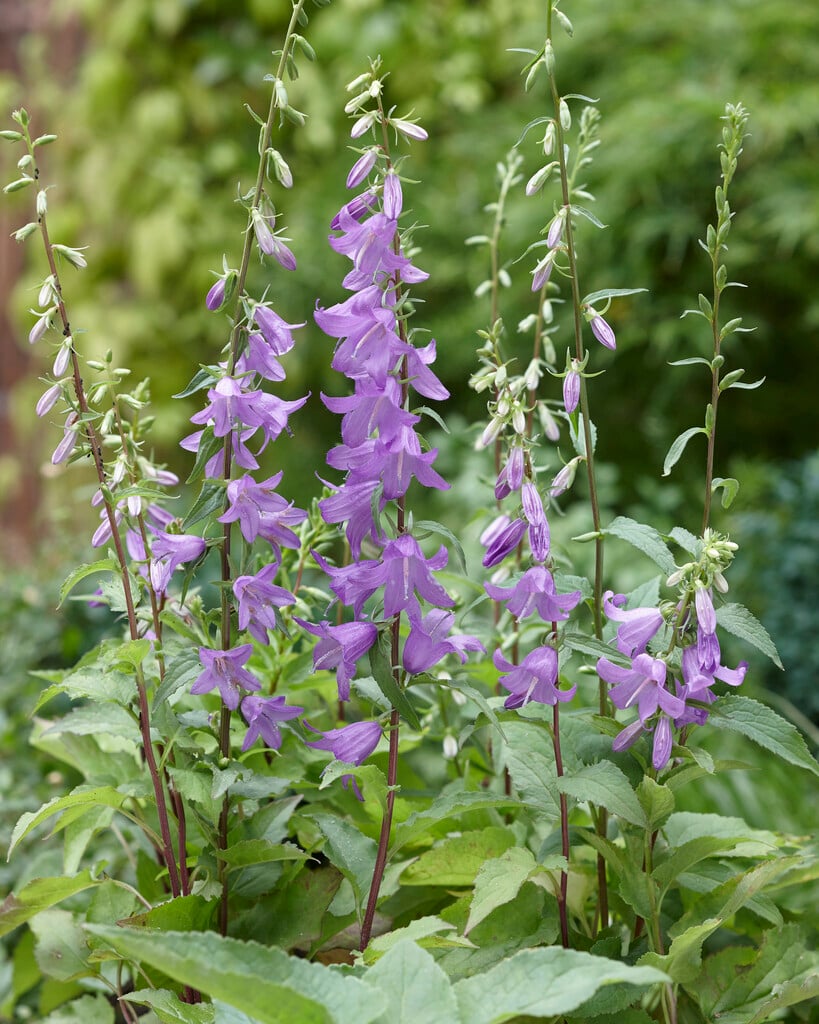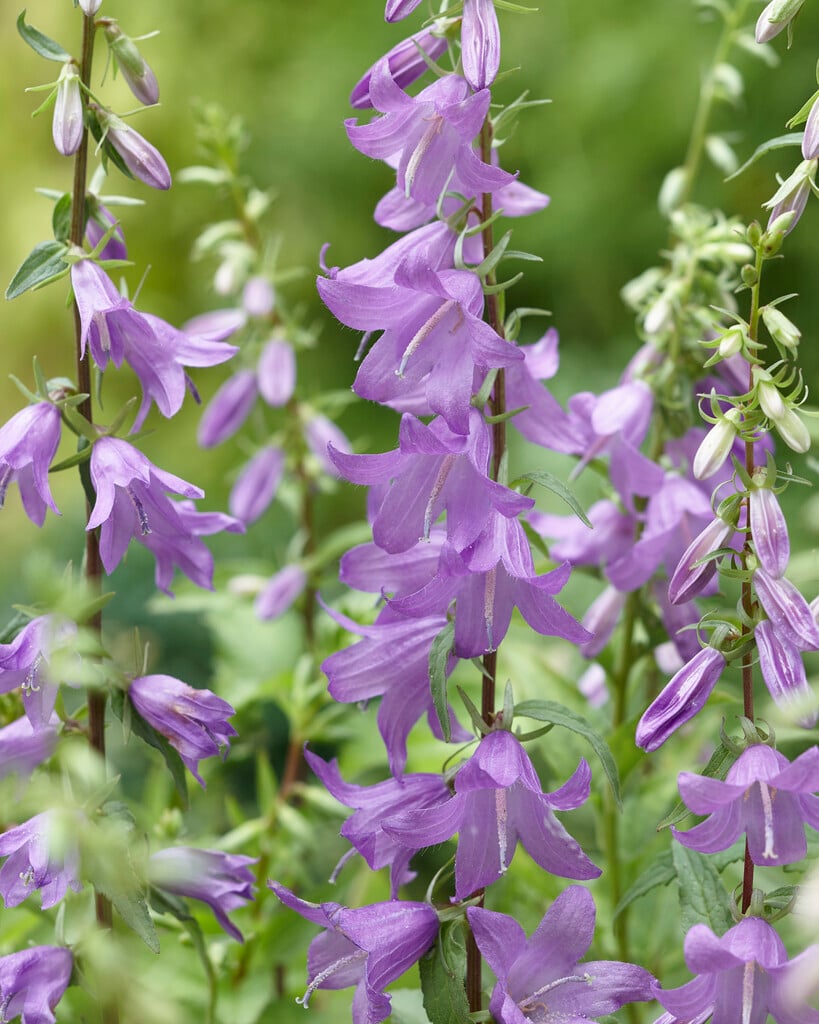Campanula rapunculoides
creeping bellflower
A clump-forming herbaceous perennial sending up tall upright stems with green, lance-shaped foliage and outward facing, white, bell-shaped flowers providing a long flowering display in summer
Size
Ultimate height
0.5–1 metresTime to ultimate height
2–5 yearsUltimate spread
0.1–0.5 metresGrowing conditions
Moisture
Moist but well–drained, Well–drainedpH
Alkaline, NeutralColour & scent
| Stem | Flower | Foliage | Fruit | |
| Spring | Green | |||
|---|---|---|---|---|
| Summer | White | Green | ||
| Autumn | Green | |||
| Winter |
Position
- Full sun
- Partial shade
Aspect
East–facing or North–facing or South–facing or West–facing
Exposure
Exposed or Sheltered Hardiness
H7Botanical details
- Family
- Campanulaceae
- Native to GB / Ireland
- No
- Foliage
- Deciduous
- Habit
- Columnar upright
- Genus
Campanula may be annuals, herbaceous or evergreen perennials, with bell or star-shaped, often blue, flowers in late spring or summer
- Name status
Correct
- Plant range
- Alps
How to grow
Cultivation
Will grow well in fertile, neutral to alkaline soil that is moist but well-drained, in full sun or partial shade avoiding wet conditions in winter. A semi-shade position will ensure the best flower colour is preserved. Will need staking in exposed sites. For more information see staking perennials.
Propagation
Propagate by division in spring or autumn and by basal cuttings in spring
Suggested planting locations and garden types
- City and courtyard gardens
- Cottage and informal garden
- Wildlife gardens
- Gravel garden
- Flower borders and beds
Pruning
Cut back after flowering to promote extended blooms
Pests
Diseases
May be susceptible to a rust, powdery mildews and leaf spot
Love gardening
Sign up to receive regular gardening tips, inspiration, offers and more
View our Privacy Policy
Get involved
The Royal Horticultural Society is the UK’s leading gardening charity. We aim to enrich everyone’s life through plants, and make the UK a greener and more beautiful place.

